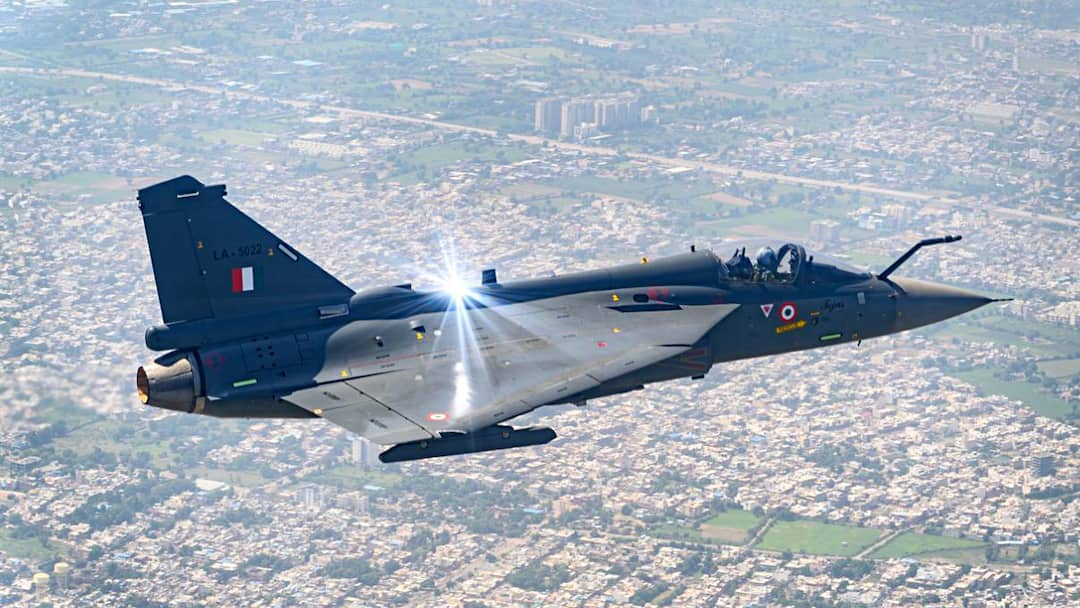Tejas Jet Crash:An Indian Air Force (IAF) Tejas fighter jet crashed on Friday during an aerial display at the Dubai Air Show, an event that draws some of the world’s top aviation manufacturers and military delegations. Officials confirmed that the aircraft went down mid-performance, cutting short its demonstration. Details on the extent of the damage and the condition of the pilot had not been released at the time of reporting, though emergency teams were seen rushing to the crash site moments after the jet descended.
The incident marks a serious setback for India’s efforts to showcase the indigenous light combat aircraft (LCA) on a global stage, especially at a platform where New Delhi has been pushing hard for defence exports.
ALSO READ: First Visual: Tejas Fighter Jet Crashes At Dubai Air Show; Massive Fireball Caught On Camera
Looking Back At The 2024 Rajasthan Crash
The Dubai incident comes barely a year after the Tejas suffered its first-ever crash in 23 years.
On March 12, 2024, a Tejas aircraft went down in Rajasthan’s Jaisalmer, close to a hostel complex. That crash was historically significant: despite its long development timeline and two decades of operations, the fighter had maintained a clean safety record until that moment.
The first Tejas crash occurred just minutes after the single-engine fighter jet had taken part in a tri-services exercise. The pilot managed to eject safely, and the aircraft continued flying straight for a short distance before hitting the ground.
According to the ongoing investigation, the most likely cause of the accident was an engine seizure triggered by an oil-pump malfunction. Following the incident, the entire LCA Mk-1 fleet underwent a detailed safety inspection, and no systemic issues were found. The Indian Air Force’s LCA squadron “Flying Daggers,” which has been operational since July 1, 2016, with IOC-configured aircraft, continues to operate the fleet after the probe ruled out broader safety concerns.
A separate official account from that day reiterated that the pilot had managed to eject safely. The Indian Air Force noted that Tuesday’s crash in Rajasthan was the first since the jet’s induction nearly eight years earlier.
Push For Indigenous Defence Manufacturing
Prime Minister Narendra Modi’s government has spent the last few years accelerating the shift toward domestic defence production. Officials repeatedly underline the country’s goal to shed its status as one of the world’s largest importers of military hardware. As part of this strategy, the Tejas program has been positioned as a flagship success story.
PM Modi set out ambitions to more than triple annual defence exports to $5 billion by 2025. A notable milestone came in 2021, when the government awarded a $6 billion contract to Hindustan Aeronautics Limited for the production of 83 Tejas jets.
However, despite the push for exports, the aircraft has faced obstacles. The Tejas has been beset by design challenges over the years and was once rejected by the Indian Navy because it was considered too heavy.
The Jet’s Journey So Far
The Tejas is primarily a single-seater fighter, though the Air Force and the Navy also operate twin-seat trainer variants. Its journey began with the first test flight of the Technology Demonstrator-1 in 2001. The program made another leap on March 22, 2016, when the Second Series Production aircraft under the Initial Operational Clearance configuration completed its maiden flight.
With the latest crash occurring on an international stage, questions around safety, readiness, and export prospects are likely to intensify, even as India continues to pitch the LCA as a symbol of its defence manufacturing ambitions.


